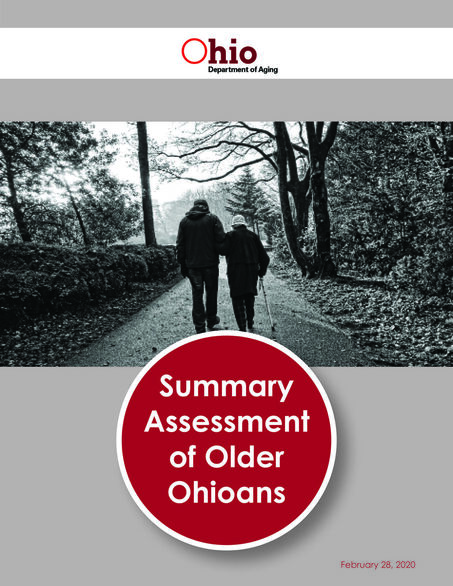Summary Assessment of Older Ohioans
The Ohio Department of Aging (ODA) contracted with the Health Policy Institute of Ohio (HPIO) to complete the Summary Assessment of Older Ohioans. The Assessment provides a comprehensive picture of the health and well-being of older Ohioans to inform development of a Strategic Action Plan on Aging (SAPA). The SAPA will be a prioritized and specific action plan that state and local partners can use to achieve health and wellbeing for older Ohioans, building from this assessment and the 2019-2022 State Plan on Aging (SPOA), and aligning with the 2020-2022 State Health Improvement Plan (SHIP).
This Summary Assessment incorporates guidance from the SAPA Advisory Committee. The Advisory Committee included 62 members (as of February 2020) representing a wide variety of sectors, including area agencies on aging, health care, long-term care, home- and community-based care, housing, transportation, food access and elder justice. Committee members will also provide guidance on the priorities and strategies included in the SAPA.
The following themes emerged from the key findings of this Summary Assessment:
The opportunity to live a long and full life is out of reach for many Ohioans
There is a gap of more than 29 years in life expectancy at birth in Ohio depending on where a person lives. Shorter life expectancy is, in part, driven by community conditions, such as education and income, disproportionately impacting older Ohioans who are black or living with a disability.
Strengthening housing and transportation in Ohio supports healthy aging
Ohio performs better than the U.S. overall on housing costs for older Ohioans who are renters. Still, over half of Ohio renters, ages 65 and older, are burdened by high housing rental costs. Transportation barriers were also called out as challenges among key stakeholders.
While most older Ohioans can cover their basic needs, many are not financially prepared for life after work
Most older Ohioans have incomes that are sufficient to cover housing costs, health care, food and other expenses (56.2% of single older adults and 81.8% of older adult couples). Still, for low- and middle-income older Ohioans in need of a nursing home or home care, the cost of services are often out of reach.
Caregiver supports and workforce capacity are key issues facing Ohio’s aging population
Ohio performs poorly relative to other states on policies that support family caregivers, including caregivers who work. Although Ohio ranks in the top half of states on several indicators of workforce capacity, inadequate home- and community-based long-term services and supports is a concern among key stakeholders.
Older Ohioans face mounting challenges related to mental health and addiction
Older Ohioans have high rates of depression, and suicide deaths have increased by 40% over the last 10 years. Ohio also performs worse than the U.S. overall and has large race and/or income disparities on smoking among Ohioans, ages 55 to 64, and unintentional drug overdose deaths among Ohioans, ages 65 and older, which have more than doubled over the past 10 years.
Chronic conditions, including heart disease, dementia and related disorders, remain a concern for older Ohioans
Older Ohioans have higher hypertension prevalence than the U.S. overall, and heart disease is the leading cause of death for Ohioans, ages 60 and older. Deaths caused by Alzheimer’s and Parkinson’s disease are among the top ten causes of death for the oldest Ohioans, ages 75 and older.

